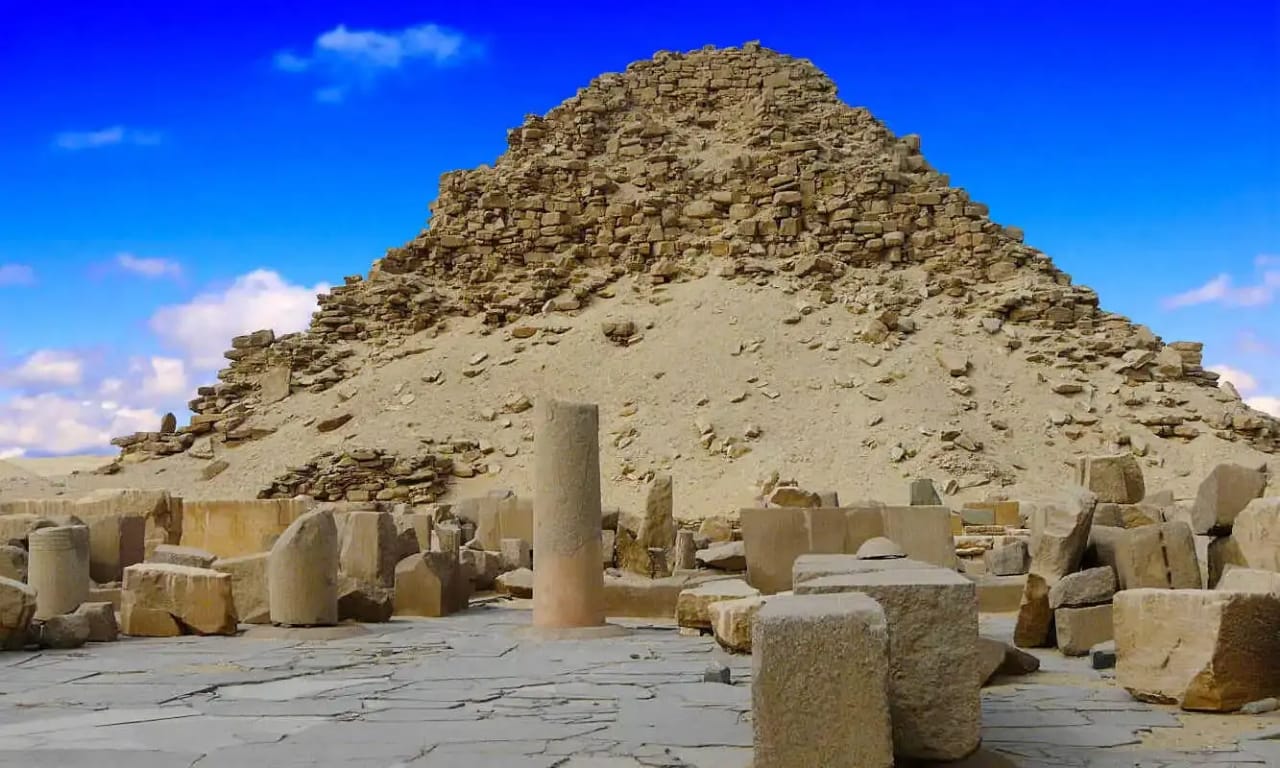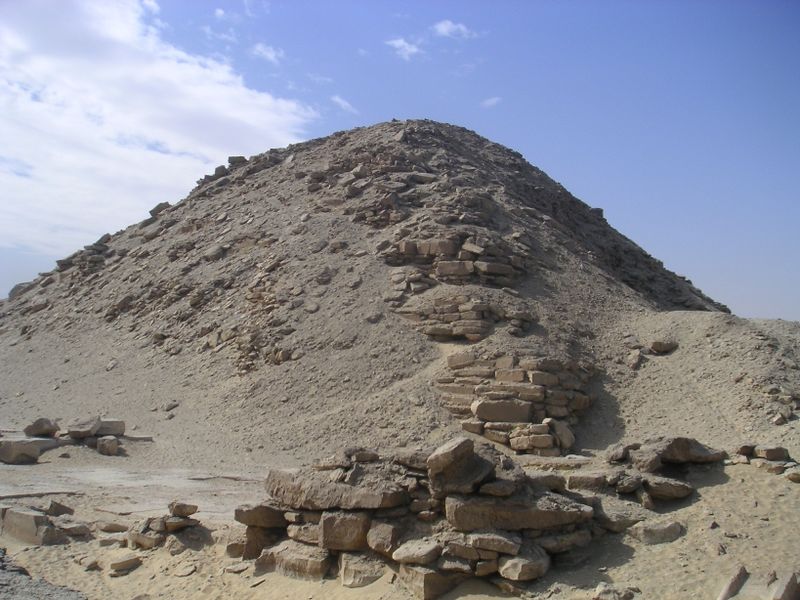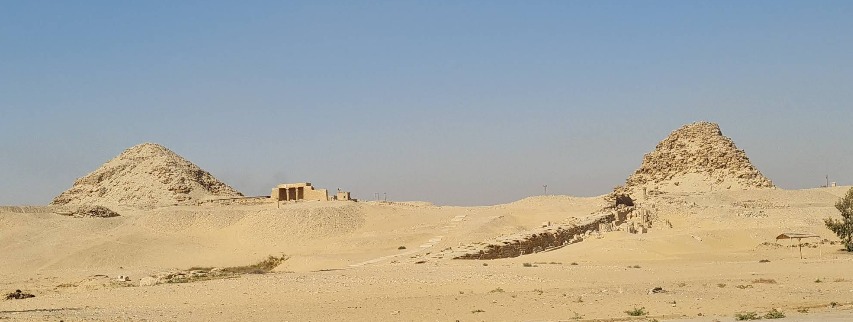The Sun Kings Sahure and Niuserre of the 5th Dynasty in Abu Sir
The 5th Dynasty: A New Era of Solar King ship
The 5th Dynasty (circa 2494–2345 BC) marked a transformative chapter in ancient Egyptian history, characterized by a profound religious evolution and remarkable advancements in royal architectural expression. While the Fourth Dynasty’s monumental pyramids at Giza showcased pharaonic power through sheer scale and funerary grandeur, the 5th Dynasty pharaohs introduced a nuanced spiritual ideology that elevated the sun god Ra to unprecedented prominence. These kings increasingly identified themselves as the “Sons of Ra,” reinforcing their divine authority through direct association with solar worship. This shift was physically manifested in the choice of Abusir —a necropolis nestled between the famed Giza Plateau and Saqqara—as their new royal burial ground and as the site of innovative religious architecture.
The Role of Sun Temples
At the heart of this era’s innovation were the unique Sun Temples: open-air sanctuaries designed explicitly for the worship of Ra, independent from the pharaohs’ funerary complexes. These temples represented a spiritual departure from the enclosed pyramid mortuary temples, instead emphasizing direct communion with the sun’s life-giving power through ritual and symbolic architecture.
Sahure: Architect of Solar King ship and Artistic Pioneer
Establishing Abusir as a Royal Necropolis
Sahure, the second ruler of the 5th Dynasty, is credited with establishing Abusir as the principal royal necropolis, a decision that would shape the religious landscape of Egypt for generations. His pyramid complex, known as Khai-ba Sahure (“The Rising of the Ba Spirit of Sahure”), was smaller in scale compared to the monumental pyramids of Giza but innovative in design and artistic sophistication. Notably, Sahure’s complex pioneered the use of palmiform columns—columns designed to resemble palm trees—introducing a naturalistic element that became a hallmark of Old Kingdom architecture.
Art and Reliefs
The mortuary temple accompanying Sahure’s pyramid was a masterpiece of artistic expression, adorned with extensive polychrome reliefs covering approximately 10,000 square meters. These reliefs are exceptional not only for their scale but also for their rich iconography, depicting a range of scenes from royal triumphs and military expeditions to intimate moments such as the king engaged in gardening—a rare glimpse into the personal life of a pharaoh. These artworks underscored Sahure’s role as a ruler who maintained order(Ma’at) and prosperity, both politically and cosmically.
The Lost Sun Temple of Sahure
Although Sahure’s own Sun Temple, known as Sekhmet-Re (“The Field of Ra”),has yet to be discovered archaeologically, textual and historical references affirm its existence. The presumed presence of this temple highlights the deep-rooted importance of solar worship during Sahure’s reign, reinforcing the theological narrative that the pharaoh was the earthly embodiment of Ra’s divine power. Sahure’s funerary cult endured for centuries, with priests and worshippers maintaining rituals that testified to his lasting spiritual and political legacy.

Niuserre Ini: Expanding the Solar Vision and Architectural Mastery
Long Reign and Building Achievements
Niuserre Ini, the sixth king of the 5th Dynasty, ruled for one of the longest periods of the era (c. 2445–2421 BCE), leaving an indelible imprint on Abusir’s religious and architectural heritage. His pyramid complex, Men-sut Niuserre (“Enduring are the Places of Niuserre”), is among the best-preserved of the site and features an unusual L-shaped mortuary temple that reflects adaptability and innovation, designed to incorporate pre-existing structure sand optimize ritual use.
The Sun Temple at Abu Ghurab
However, Niuserre’s most significant contribution lies in his construction of the Sun Temple at Abu Ghurab, just north of Abusir. Named Shesepu-ib-Re (“Delight of Ra”), this temple is the largest and most architecturally complete Sun Temple uncovered to date, offering unparalleled insights into the religious practices and symbolism of solar worship during the Old Kingdom.
Symbolism and Ritual
Central to the temple was a massive, squat obelisk resting on a substantial platform—believed to symbolize the primordial mound from which the sun god emerged. This obelisk, differing from later slender Egyptian obelisks, was a thick, monumental structure that physically embodied the power and presence of Ra. In front of it stood a large circular altar made fromalabaster, encircled by hotep signs (symbolizing offerings and peace), where ritual sacrifices and offerings were made to sustain the sun’s journey and Egypt’s prosperity.
Chambers and Reliefs
The temple also contained fascinating features such as the Chamber of Seasons, its walls adorned with reliefs illustrating the cyclical natural phenomena vital to Egypt’s agricultural and religious calendar. These images connected the pharaoh’s divine duty to the land’s fertility and the cosmic order. Another notable discovery was the solar boat—a mudbrick model representing the vessel that carried Ra across the sky during the day and through the underworld by night, reinforcing the temple’s role as a microcosm of the solar cycle.

Theological and Political Implications: Kingship as Solar Embodiment
The pyramids and Sun Temples of Sahure and Niuserre exemplify a profound theological shift in ancient Egyptian society. By increasingly emphasizing the pharaoh’s identification as the “Son of Ra,” the 5th Dynasty kings recast royal authority as a sacred duty to maintain Ma’at—the harmonious balance of the universe—through solar worship. This represented a move away from purely funerary concerns toward a more dynamic conception of kingship, where the ruler’s power was continuously renewed through ritual engagement with the sun.
This solar-centric ideology not only enhanced the pharaoh’s divine status but also established Abusir as a spiritual and political hub. The architectural grandeur and ritual functions of the pyramids and temples reinforced the message that the king’s legitimacy derived directly from his connection to Ra, the ultimate source of life and order.
Moreover, the innovations introduced by Sahure and Niuserre influenced subsequent religious developments, setting the stage for future reforms, including the radical monotheism of Pharaoh Akhenaten’s Amarna Period millennia later.
Architectural and Artistic Innovations: Legacy Beyond Religion
Sahure’s Innovations
Beyond religious significance, the pyramids and temples of Sahure and Niuserre are celebrated for their architectural and artistic breakthroughs. Sahure’s use of palmiform columns introduced organic motifs into monumental stone architecture, blending natural symbolism with royal iconography. The vivid reliefs at Sahure’s mortuary temple represent some of the earliest large-scale polychrome artworks, providing not only religious narratives but also detailed historical documentation of Egypt’s interactions with neighboring regions through trade and military expeditions.
Niuserre’s Temple Design and Cosmic Planning
Niuserre’s architectural ingenuity is apparent in the L-shaped mortuary temple design, accommodating complex ritual needs while respecting the pre-existing structures on the site. His Sun Temple’s layout reflects sophisticated planning that aligned the temple with solar events, such as the solstices and equinoxes, ensuring that sunlight would illuminate key parts of the temple during important ceremonies. This cosmic alignment emphasizes the integration of architecture with Egyptian cosmology, a theme that echoes throughout later Egyptian temple design.
Cultural and Historical Impact: The Enduring Influence of the Sun Kings
The legacies of Sahure and Niuserre extend beyond their lifetimes, influencing Egyptian culture, religion, and architecture for centuries. Their emphasis on solar worship elevated Ra’s cult to a central position in Egyptian theology, shaping state ideology and royal legitimacy throughout the Old Kingdom and beyond. The rituals and symbolic meanings embedded in their pyramids and Sun Temples provided a blueprint for understanding the pharaoh’s divine role, linking earthly rule with cosmic order.
Abusir, once a thriving center of royal and religious activity, now offers archaeologists and historians a rich repository of evidence that illuminates this critical period. The discoveries of inscriptions, reliefs, and architectural remains continue to enhance our understanding of how these Sun Kings shaped ancient Egyptian civilization.
Today, Abusir remains a quieter, less visited site compared to Giza or Saqqara, yet it holds a spiritual aura and historical depth that invite contemplation on the dynamic relationship between religion, power, and architecture in ancient Egypt. The Sun Kings Sahure and Niuserre’s ambitious building programs and theological innovations underscore a pivotal moment in history when Egypt’s rulers harnessed the eternal power of the sun to legitimize and eternalize their reigns.
Artistic Developments and Symbolism in Sahure and Niuserre’s Monuments
Visual Narratives in Reliefs
The artistic achievements under Sahure and Niuserre reflect not only technical mastery but also symbolic complexity. Sahure’s pyramid complex introduced new artistic conventions that expanded the narrative potential of temple reliefs. Scenes depicting foreign tribute, naval expeditions, and exotic animals symbolize Egypt’s growing influence and interaction with neighboring regions such as Nubia and the Levant. These visual records functioned both as political propaganda and as spiritual affirmations of the king’s divine favor and prowess.
Hieroglyphic and Artistic Integration
The vibrant polychrome reliefs at Sahure’s mortuary temple also feature the early use of hieroglyphic inscriptions integrated harmoniously with visual storytelling, a technique that influenced Egyptian temple decoration for centuries.
Solar Symbolism and Cosmic Order
Niuserre’s Sun Temple, with its massive obelisk and altar, is rich with solar symbolism. The obelisk’s shape and scale were designed to evoke the sun’s rays and its life-giving energy. The surrounding reliefs depicting the changing seasons emphasize the pharaoh’s role as a cosmic intermediary who ensured agricultural fertility and societal prosperity. The solar boat model found at the site recalls ancient Egyptian mythology, where Ra journeys nightly through the underworld, defeating chaos and ensuring the dawn. This motif reinforced the cyclical nature of kingship and divine order.
Legacy of Solar Worship
The religious innovations of Sahure and Niuserre laid the groundwork for the enduring centrality of solar worship in Egypt, influencing the theology of later dynasties. Their promotion of the pharaoh as “Son of Ra” established a theological framework that would persist for over a millennium.
Centuries later, during the New Kingdom, the reverence for the sun reached new heights, especially under rulers like Akhenaten, who radically transformed Egyptian religion by promoting the worship of Aten, the sun disk, as the sole god. While Akhenaten’s monotheism was unprecedented, it was built upon the solar-centered kingship ideology pioneered in the Old Kingdom, particularly during the 5th Dynasty.
Architecturally, the innovations in temple design, use of symbolism, and monumental obelisks set standards that persisted. Obelisks, initially introduced as part of solar temples in the 5th Dynasty, became prominent features in temples across Egypt and were later transported to distant lands, symbolizing Egyptian cultural influence.

